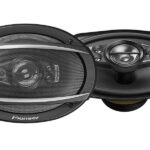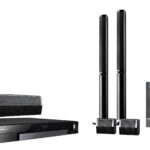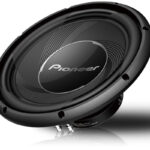Bad RCA cable symptoms include distorted or intermittent audio and video signals, static or buzzing sounds, and color or image quality issues. These symptoms indicate the need for a replacement or repair of the RCA cable.
A faulty RCA cable can cause a range of issues that affect audio and video signals. Distorted or intermittent signals are commonly experienced, resulting in a disrupted viewing or listening experience. Additionally, static or buzzing sounds may be heard, interfering with the desired audio quality.
Color or image quality issues can also occur, such as washed-out colors or blurry visuals. To resolve these problems, it is essential to identify and address the faulty RCA cable. By replacing or repairing it with a good-quality cable, the audio and video signals can be restored to their optimal performance.
Identifying The Signs Of A Bad Rca Cable
Identifying the Signs of a Bad Rca Cable:
Fuzzy or Distorted Audio: A common symptom of a bad RCA cable is when you experience fuzzy or distorted audio. This can manifest as crackling sounds, static, or a general loss of clarity in the audio.
Poor Audio Quality: Another sign of a bad RCA cable is poor audio quality. You may notice that the sound is muffled, lacks depth, or is generally unpleasant to listen to. This can significantly impact your overall audio experience.
No Sound: If you plug in your RCA cable and there is no sound at all, it is a clear indication of a problem. This can be frustrating, especially if you are trying to enjoy your favorite movies or music.
Audio Dropouts: Audio dropouts occur when the sound suddenly cuts out or skips. These interruptions can be brief or prolonged and can disrupt your audio experience.
Intermittent Connection Issues: If you experience intermittent connection issues, where your audio works occasionally or cuts in and out randomly, it is likely due to a faulty RCA cable.
Troubleshooting Bad Rca Cable Symptoms
Troubleshooting Bad Rca Cable Symptoms
One of the most common RCA cable issues is a loose connection. To check for this, ensure that both ends of the cable are securely plugged into their respective devices. If the connections are loose, reinsert the plugs firmly to eliminate any potential signal interruptions.
Inspecting the Cable for Physical Damage
Physical damage can also cause RCA cable problems. Inspect the cable thoroughly for any signs of frayed wires, cuts, or bends. If you find any damage, it’s recommended to replace the cable.
Testing the Cable with a Different Device
If you’re experiencing RCA cable issues, try connecting it to a different device. This helps rule out any issues with the original device. If the problem persists, it’s likely the cable is at fault.
Trying a Different RCA Cable
Using a different RCA cable can help determine if the issue lies with the cable itself. Swap it with a known working cable and see if the symptoms persist. If the problem resolves with the new cable, the original one may need to be replaced.
Checking the Source Device Settings
Sometimes, issues with RCA cables can be due to incorrect settings on the source device. Ensure the audio/video output settings on the device are appropriately configured to match the connection type.
Preventing And Fixing Bad Rca Cable Issues
Improper handling and storage of RCA cables can result in various issues that affect the audio and video quality. One of the typical symptoms of a bad RCA cable is poor sound or distorted video output. To prevent and fix these problems, it is essential to follow a few guidelines:
- Proper Cable Storage: Store your RCA cables in a cool, dry place away from direct sunlight and extreme temperatures.
- Avoiding Cable Bends or Twists: Handle your cables with care, avoiding excessive bending or twisting that can damage the internal wires.
- Using High-Quality RCA Cables: Invest in high-quality RCA cables that offer better conductivity and shielding for optimal audio and video transmission.
- Regularly Inspecting and Replacing Cables: Inspect your RCA cables periodically for any signs of wear or damage, and promptly replace them if necessary.
- Performing Routine Maintenance: Clean the connectors and plugs of your RCA cables regularly to remove any dirt or debris that may hinder signal transmission.
Conclusion
To sum up, recognizing the symptoms of a bad RCA cable is crucial to maintain high-quality audio and video connections. Whether it’s distorted sound, fuzzy images, or intermittent signals, identifying these issues early on can save you from further frustration down the line.
Regularly inspecting and replacing faulty cables will ensure smooth and uninterrupted entertainment experiences. Don’t let a bad RCA cable hamper your audiovisual enjoyment; address the symptoms promptly for optimal performance.
Frequently Asked Questions On Bad Rca Cable Symptoms
What Are The Symptoms Of A Bad Rca Cable?
Some symptoms of a bad RCA cable include distorted or no sound, fuzzy or no picture, and intermittent connections. These issues can occur due to damaged connectors, loose connections, or poor quality cables. It’s important to check and replace the RCA cable if you’re experiencing any of these symptoms to ensure optimal audio and video quality.








